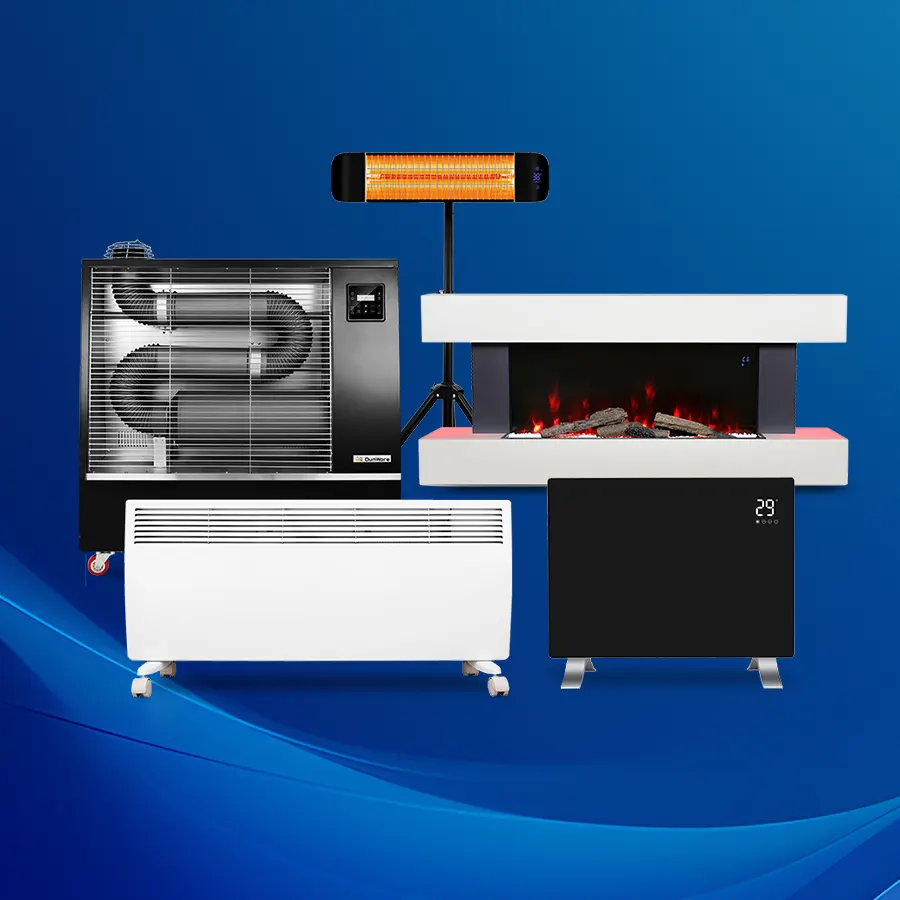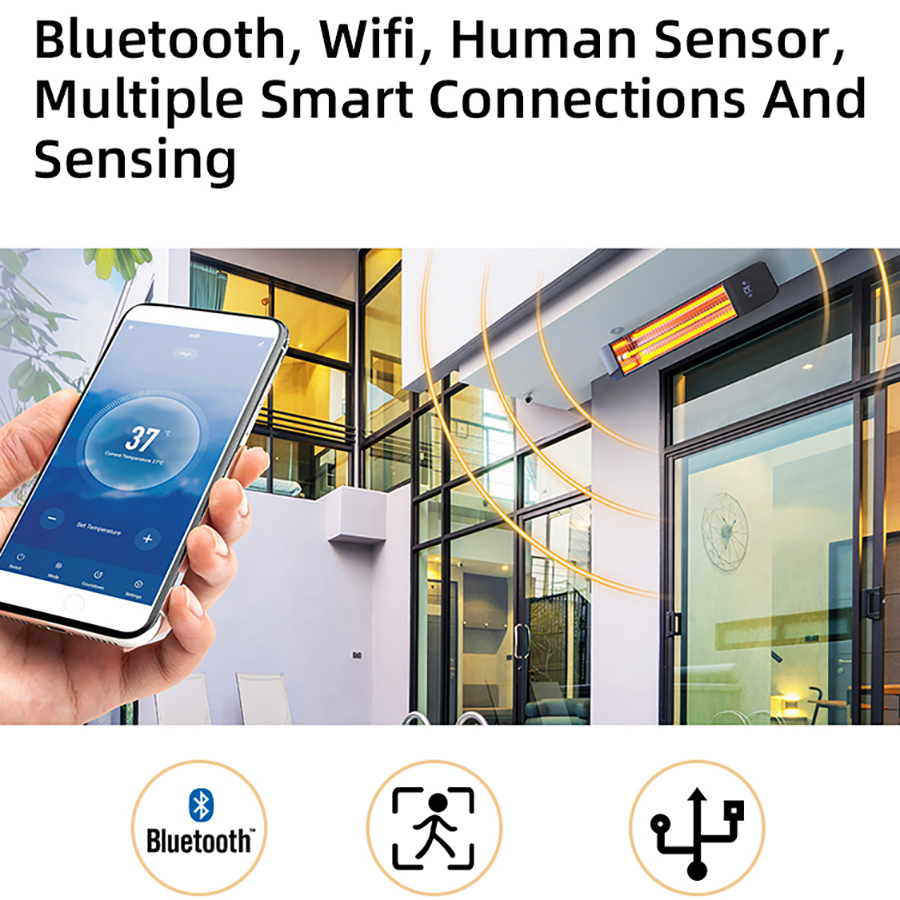Evaporative coolers, También conocido como refrigeradores de pantano, are energy-efficient and eco-friendly cooling systems. Sin embargo, their performance is greatly influenced by the surrounding environment, particularly the humidity levels.
En este artículo, we’ll explore the impact of coolers in humid areas, dive into how evaporative cooling works, and provide insights into the challenges and advantages of using these coolers in humid climates.
What Is Humid Climate and How Does It Form?

Before understanding how evaporative coolers are affected, it’s essential to know what defines a humid climate and how it develops.
Definition of Humid Climate
- High Moisture Content
A humid climate refers to an environment where the air holds a significant amount of water vapor, typically above 60%. This occurs because warmer air can hold more moisture, and when air is saturated with this moisture, it leads to higher humidity levels.
- Regional Impact
Humidity is common in tropical and coastal areas, especially near bodies of water like oceans, lakes, and rivers. These areas are more prone to humid weather patterns due to the constant evaporation of water into the air.
Formation of Humidity
- Evaporation from Water Bodies
Large bodies of water (e.g., oceans and lakes) constantly release water vapor into the atmosphere through evaporation, especially in warm conditions. The air absorbs this vapor, leading to increased humidity.
- Condensation Process
When warm air meets cooler surfaces, such as in the early morning or evening, the moisture in the air condenses, leading to visible dew or fog, especially in coastal and inland regions with little wind.
Impact on Weather Patterns
- Heavy Rainfall
High humidity is often associated with more rainfall. As the air reaches its saturation point, it can no longer hold all the moisture, leading to precipitation.
- Temperature Variations
In humid climates, temperatures don’t fluctuate as much between day and night. High moisture in the air acts as an insulator, trapping heat during the day and preventing the cooling effects that occur in dry climates at night.
What Are Evaporative Coolers?
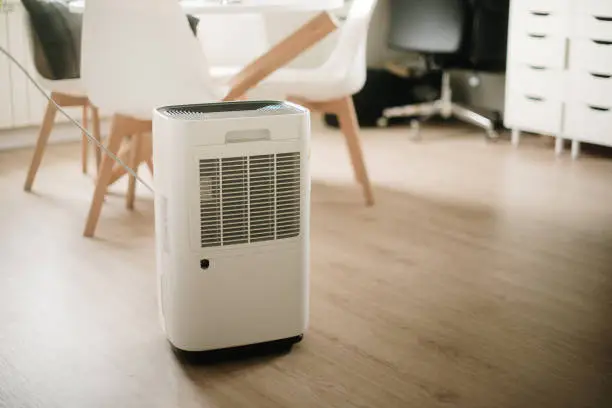
Evaporative coolers have become a popular choice for cooling spaces in arid and dry climates, but their design and operation are often misunderstood. Let’s break down how they work.
How Evaporative Coolers Function
- Evaporation Process
Evaporative coolers cool the air by using water-soaked pads. As warm air passes through these pads, the water evaporates, absorbing heat from the air. This process cools the air before it is circulated into the room.
- Temperature Drop
The temperature drop depends on the air’s humidity level; En climas secos, the air can absorb more moisture, resulting in a larger cooling effect.
Components of an Evaporative Cooler
- Cooling Pads
The pads are made from materials that allow water to be absorbed and evaporate efficiently. These pads play a critical role in the performance of the cooler.
- Water Pump
The water pump continuously circulates water through the pads to ensure they stay moist.
- Fan System
The fan draws warm air from the outside, passes it through the wet pads, and blows cool air into the room.
Ideal Operating Conditions for Evaporative Coolers
- Low Humidity
These coolers work best in dry, hot conditions where the air has a high capacity to absorb moisture. In such environments, the temperature can drop significantly, offering a cost-effective and environmentally friendly cooling option.
- High Ambient Temperature
Evaporative coolers are most effective in areas with high ambient temperatures, typically above 80°F (27°C).
In these conditions, the cooler’s cooling capacity is maximized, and it can provide a comfortable indoor environment at a fraction of the energy consumption compared to traditional air conditioners.
- Proper Ventilation
Para un rendimiento óptimo, evaporative coolers require proper airflow. A well-ventilated space allows the cooler to draw in fresh, dry air while expelling warm, moist air.
Without adequate ventilation, the cooling effect can be reduced, and humidity levels inside the space may rise, limiting the cooler’s effectiveness.
Do Evaporative Coolers Work Well in Humid Climates?
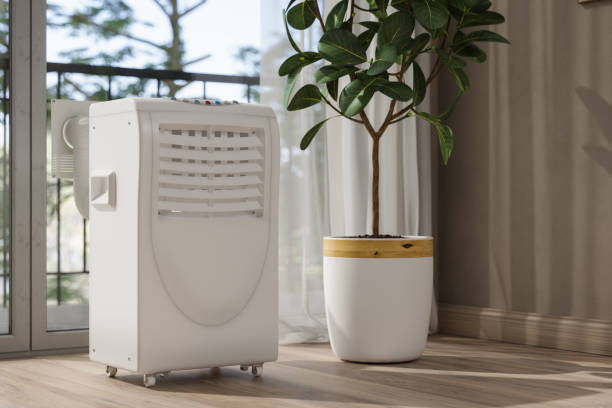
In a humid climate, the performance of evaporative coolers can vary significantly. Let’s examine how humidity affects their cooling efficiency.
The Impact of Humidity on Evaporative Coolers
- Reduced Cooling Capacity
In humid climates, the air already contains a significant amount of moisture, which makes it harder for the cooler to evaporate more water and produce a cooling effect. The less moisture the air can absorb, the less effective the cooler becomes.
- Minimal Temperature Reduction
En áreas húmedas, the cooler’s ability to lower the temperature is significantly reduced. The typical temperature drop of 15-20°F (8-11°C) in dry conditions is often limited to just a few degrees in humid regions.
Why Do Evaporative Coolers Struggle in Humid Conditions?
- Saturation of Air
As the air becomes saturated with moisture, the evaporative process slows down, making it harder for the cooler to extract heat from the air effectively.
- Comfort Issues
Instead of creating a comfortable cool environment, swamp coolers in humid climates may add more moisture to the air, leading to even more discomfort and a feeling of stuffiness.
Conditions Under Which Evaporative Coolers Can Still Help
- Low Humidity Days
On certain days, even in typically humid regions, there may be brief periods of lower humidity (e.g., after rainfall or in the evening). During these times, evaporative coolers can still provide some cooling relief.
- Well-Ventilated Spaces
If the area where the cooler is used has sufficient airflow, it can help reduce the feeling of stagnation and provide some comfort, even in humid conditions.
Pros and Cons of Evaporative Cooling in Humid Climates
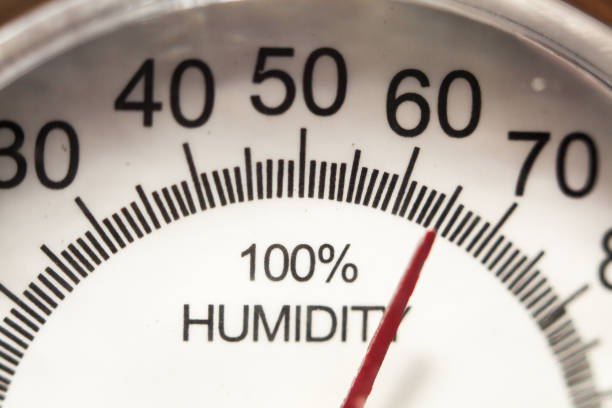
Despite the challenges, evaporative coolers have a few advantages when used carefully in humid environments.
Lower Energy Consumption
- More Energy-Efficient Than Air Conditioners
Although not as effective as air conditioners in humid climates, evaporative coolers still use less energy compared to traditional AC units. They consume less power, which can lead to lower electricity bills.
- Respetuoso con el medio ambiente
Evaporative coolers use water as the primary cooling medium, which makes them more eco-friendly than air conditioners that rely on chemical refrigerants. This makes them a good option for those looking to reduce their carbon footprint.
Improved Air Circulation
- Ventilación
Even in humid climates, evaporative coolers can still provide some benefits by improving air circulation. In areas where stagnant air is a problem, moving the air around can help reduce the feeling of stuffiness and promote a sense of freshness.
Affordable Alternative to Air Conditioners
- Initial Investment
Evaporative coolers are generally less expensive to purchase and install compared to air conditioning systems. For homeowners or businesses on a budget, this can make them a more affordable cooling solution, especially in areas with intermittent humidity levels.
Sin embargo, while evaporative coolers in humid areas can still be used, they come with several notable disadvantages.
Decreased Cooling Efficiency
- Diminished Effectiveness
The primary issue in humid climates is that the cooler simply cannot lower the temperature enough to make a significant difference. Since the air cannot absorb additional moisture, the temperature may only drop marginally, making the cooling effect minimal.
- Need for Longer Operating Time
To achieve any noticeable cooling effect, the cooler may need to run for much longer periods. This could lead to wasted energy, especially when the benefits are limited.
Increased Humidity Levels
- Adding More Moisture
Evaporative coolers add water to the air, which can make the environment feel even more humid. This may lead to discomfort as the air becomes even heavier and more oppressive.
- Uncomfortable Conditions
In areas where the humidity is already high, the added moisture from the cooler can create a feeling of suffocation or stickiness, further diminishing comfort levels.
Risk of Mold and Mildew
- Excess Moisture
The additional moisture introduced by the cooler can promote mold and mildew growth, particularly in poorly ventilated areas. This can degrade the air quality and pose health risks.
- Long-Term Damage
Continuous high humidity levels can lead to the deterioration of the cooler’s components, particularly the cooling pads and water reservoir, which could result in the need for frequent maintenance or replacement.
Alternatives to Evaporative Coolers in Humid Climates
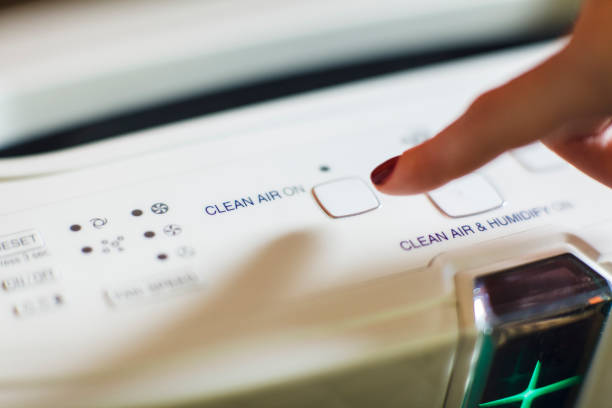
If you live in a humid climate and need better cooling, you may want to consider alternatives that are more effective in such conditions.
Air Conditioners
- Dual Cooling and Dehumidifying
Air conditioners are designed to cool the air while simultaneously removing excess moisture, which is a significant advantage in humid climates. Unlike evaporative coolers, they can handle both cooling and dehumidification, offering a more comfortable indoor environment.
- Efficient in High Humidity
Air conditioners are much more efficient than evaporative coolers in humid conditions, providing consistent cooling regardless of the moisture content in the air.
Portable Air Coolers for Humid Climate
- Hybrid Systems
Some portable air coolers for humid climates combine cooling and air filtration, making them more effective in humid regions. These systems can provide cooling without adding excessive moisture to the air.
- Better Air Quality
In addition to cooling, these units often purify the air, which can help improve indoor air quality by removing dust, allergens, and other pollutants.
Outdoor Cooling Systems for Humid Climates
- Sistemas de neblina
Outdoor cooling systems for humid climates, such as misting fans or systems, release fine mist into the air, helping to lower the temperature without significantly increasing the humidity. This is ideal for outdoor spaces where evaporative coolers may not be effective.
- Cooling Fans
In areas with high humidity, using large outdoor cooling fans can help circulate air without adding moisture to the environment, making them a more suitable option for certain humid areas.
Choosing The Right Evaporative Cooler For Yourself
Types of Evaporative Coolers
Enfriadores de aire evaporativos come in various types, each suited for different applications and environments. Understanding these different types can help you select the right cooler for your specific needs.
1. Portable Evaporative Coolers
- Description
These are smaller, compact units that can be moved from room to room. They are ideal for cooling individual rooms or spaces without the need for installation.
- Mejor para
Smaller spaces, oficinas, and areas where permanent installations are not feasible. Portable coolers can work in humid climates but with limited cooling effects.
- Características clave
Easy mobility
Lower installation cost
Water tank for continuous operation
2. Window Evaporative Coolers
- Description
These coolers are installed in a window and are a more permanent solution compared to portable models. They are larger and can cool entire rooms or small houses.
- Mejor para
Homes or businesses that need a more powerful and constant cooling solution. While not ideal for humid climates, they can be more efficient than portable coolers due to the larger air intake.
- Características clave
Mounted in windows
Powerful cooling capabilities
Cost-effective compared to air conditioning
3. Ducted Evaporative Coolers
- Description
Ducted coolers are larger units designed to cool multiple rooms or even entire homes. They are connected to a duct system that circulates cool air through vents placed around the property.
- Mejor para
Larger buildings or homes with multiple rooms. In humid climates, they can still work if humidity levels aren’t excessively high but may need longer operating times to achieve noticeable cooling.
- Características clave
Centralized cooling for large spaces
Quiet operation
Can integrated with home ventilation systems
4. Industrial Evaporative Coolers
- Description
These heavy-duty coolers are designed for large industrial spaces or warehouses. They handle large volumes of air and cool wide areas.
- Mejor para
Fábricas, almacenes, and large commercial spaces. They are less effective in extremely humid conditions but can provide cost-effective cooling when the humidity is lower or controlled.
- Características clave
High air volume cooling
Suitable for large, espacios abiertos
More energy-efficient than traditional AC for large spaces
Tips for Choosing the Right Evaporative Cooler
Choosing the right evaporative cooler for your space can make a huge difference in comfort and energy efficiency. Here’s a guide to help you make an informed decision:
Understand Your Cooling Needs
- Size of the Space
Determine the area you need to cool. Evaporative coolers are ideal for open spaces and work best in dry climates. Check the cooling capacity (measured in CFM, cubic feet per minute) of the cooler and match it with the square footage of your room.
- Clima
Evaporative coolers work best in dry, climas cálidos. If you live in a more humid area, they might not be as effective.
Consider Airflow Capacity (CFM)
A higher CFM means more airflow and greater cooling power. For instance, for a room of 500 cuadrado. pie, look for a cooler with a CFM of around 2,500–3,000. Para áreas más grandes, increase the CFM accordingly.
- Check the Water Tank Size
Larger water tanks mean longer operating times before you need to refill. This can be important if you want continuous cooling without frequent maintenance.
- Eficiencia Energética
Evaporative coolers are known for being energy-efficient compared to traditional air conditioners. Check the energy consumption (usually listed on the label) to ensure you get a model that balances performance with energy savings.
- Filter Quality
The quality of the water pads (filtros) impacts the cooling effectiveness and the air quality. Choose coolers with high-quality cooling pads made of materials like cellulose or aspen, which can help improve the cooler’s efficiency and lifespan.
- Niveles de ruido
Evaporative coolers tend to be quieter than air conditioners, but some models can still generate noise. Check the decibel (dB) rating if noise is a concern, especially if you plan to place it in a bedroom or office.
- Funciones adicionales
Remote Control and Smart Features: Some coolers come with remote controls or even smart features that allow you to adjust settings from your smartphone.
- Air Purification
Some models come with built-in filters or UV light features to help purify the air as it cools, which can be great for people with allergies or asthma.
- Humidification
If you live in a very dry climate, a model with adjustable humidity control can provide additional comfort.
Selecting the right evaporative cooler involves balancing your space size, cooling needs, and budget. Make sure to choose one with a suitable CFM rating, water tank size, and features to ensure long-term efficiency and comfort.
Fabricante mayorista de enfriadores de aire en China
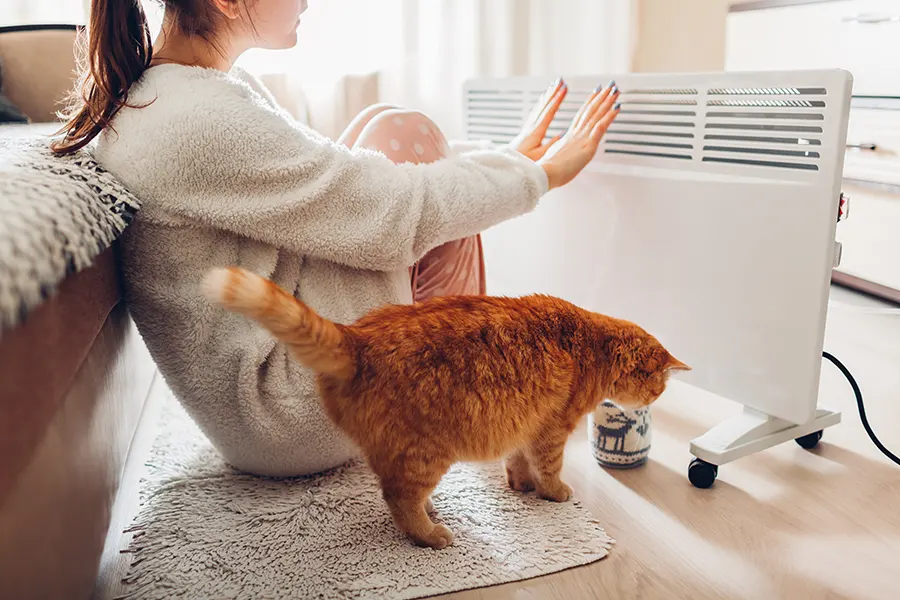
y yika, nuestro R&equipo D is committed to delivering innovative and reliable heating solutions to meet the diverse needs of our customers. Ensure safety and quality by choosing our range of silent heaters. Nuestros calentadores eléctricos ofrecen alta eficiencia., proporcionando un calor relajante sin ningún olor que lo acompañe durante el uso.
In addition, get custom/OEM electric heaters, chimeneas eléctricas a medida, y refrigeradores de aire personalizados en Yika. Proporcionamos soluciones personalizadas integrales que cubren la apariencia., instalación, métodos de control, funcionalidad, tipos de enchufe, embalaje, and more.
Rest easy knowing our calentadores electricos are certified with ERP, RoHS, CCE, GS, y otras normas internacionales, ensuring your users’ comfort aligns with the highest industry benchmarks.
Preguntas frecuentes
Do evaporative coolers work well in humid climates?
Your evaporative cooler can still function effectively in humidity levels ranging from 30% a 50%, though you may notice a decrease in its cooling efficiency as the moisture in the air increases.
As the humidity exceeds 50%, the cooler’s performance will be significantly diminished, as the air can no longer absorb the moisture needed for evaporation to occur.
In these conditions, it is advisable to consider alternative cooling methods, such as refrigerated air conditioning, to maintain optimal comfort and cooling effectiveness.
How to use evaporative cooling when it’s humid?
When the weather is humid, the most effective way to use your evaporative cooler is by setting it to vent mode. In this setting, the cooler operates just as a powerful fan, circulating air throughout the space without adding extra moisture to the air.
This allows you to benefit from the cooling breeze without exacerbating the already high humidity levels. By avoiding additional water evaporation, you can maintain better air quality and comfort, preventing the space from feeling even more oppressive and damp.
Which cooler is best for high humidity?
y yika, we have a variety of evaporative air coolers for you to choose from. If you need to use it in a larger space or for commercial purposes, you can choose the FLI-18Z industrial commercial evaporative air cooler with remote control.
If you use it at home, you can choose our FLB-105GTR household evaporative air cooler with heating and cooling functions.
Can I run my evaporative cooler all day?
Running your evaporative cooler all day is generally fine if you’re in a dry climate or if you’re using it as part of a well-ventilated, energy-efficient system. Just be mindful of the humidity and water supply, and make sure to clean it regularly for the best performance.
If you’re in a humid climate, consider adjusting the usage times or switching to vent mode to avoid increasing indoor moisture levels.
Why is my evaporative cooler not blowing cold air?
If your evaporative cooler isn’t blowing cold air, the most likely causes are low water supply, dirty or clogged cooling pads, inadequate airflow, or high humidity. In dry climates, evaporative coolers perform best, but in humid areas, their efficiency decreases.
To troubleshoot, check, and refill the water reservoir, clean the cooling pads, and ensure proper airflow by inspecting the fan and filters. If these steps don’t resolve the issue, there may be mechanical or electrical problems that require professional attention.
Does putting ice in an evaporative cooler work?
While adding ice to an evaporative cooler may offer a minor cooling boost initially, it is not an efficient or long-term solution for enhancing its performance. The cooling effectiveness of an evaporative cooler is primarily dependent on the ambient temperature, humidity levels, and airflow.
Conclusión
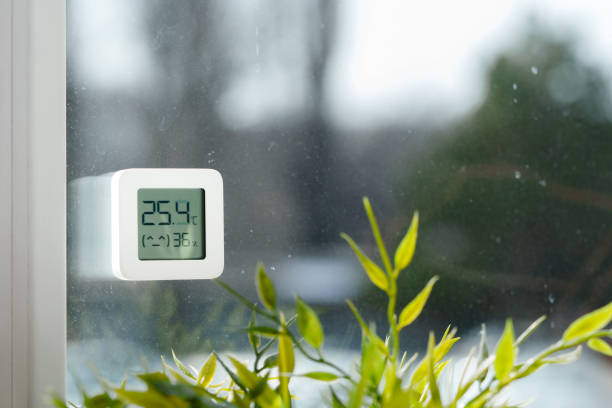
Evaporative coolers are a great option for cooling dry climates, but their performance in humid climates is limited. The cooler’s reduced cooling efficiency added moisture, and potential for mold growth make them less ideal for moist conditions.
Sin embargo, with proper maintenance and understanding of their limitations, evaporative coolers can still provide a cost-effective and eco-friendly cooling solution in regions with variable humidity.
For better cooling in humid areas, consider alternatives such as air conditioners or portable air coolers for humid climates. Understanding the local climate and the specific cooling needs of your space is essential for selecting the most effective cooling solution.

